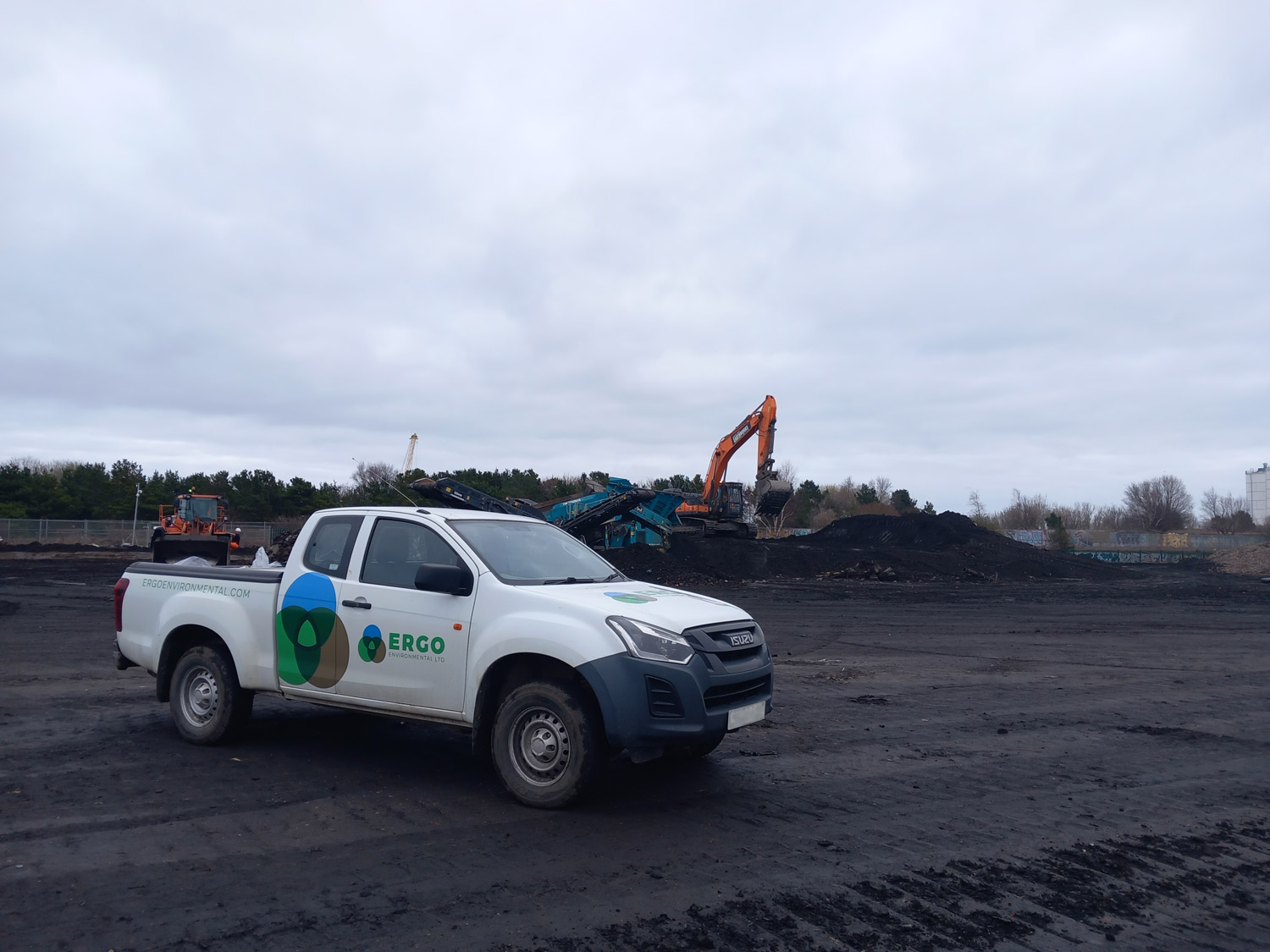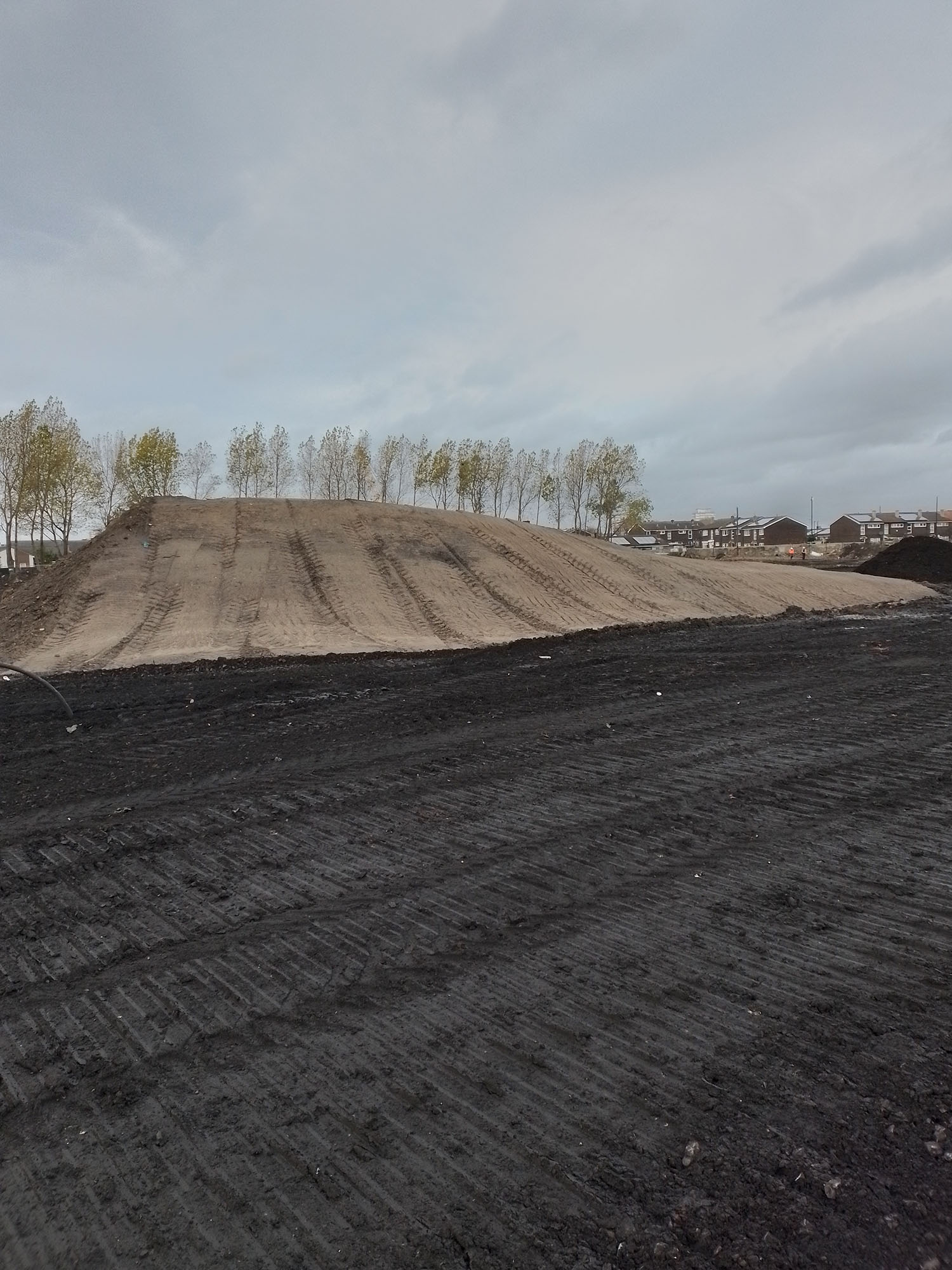ERGO completed a large-scale remediation and validation project on a former Port in the North East of England. ERGO were appointed by the developer as an independent Geoenvironmental Consultant, our remit included the subsequent production of a detailed report to ensure the satisfaction of the relevant planning conditions, Building Control/ warranty providers and the future adoption of infrastructure by the Highways Authority and statutory service providers.
Site Remediation and Validation of a Commercial Brownfield Development
Project Overview

Site Background
The site has an extensive industrial history, with former developments such as railway lines, smithies, workshops, an engine house and depots.
Investigation identified elevated concentrations of contaminants such as heavy metals, polycyclic aromatic hydrocarbons and Asbestos containing materials.

Site Works
ERGO provided comprehensive supervision of both geoenvironmental and geotechnical aspects of the works. This included the initial chemical assessment of materials to determine suitability for reuse, along with the removal of hotspots and unsuitable materials identified within the discovery stage. We also carried out further validation testing following the completed site turnover and placement of soils on site to the specified development platform levels.
This was facilitated by a CL:AIRE Materials Management Plan (MMP) to reuse site generated soils. ERGO completed this plan prior to the works commencement – identifying the volume of materials to be used along with the criteria for soils to be retained and reused on site within a commercial scheme.
Following approval, ERGO completed an initial chemical assessment of the site of the bulk turnover materials to the agreed remediation specification.
This identified several locations of contamination, which were marked as hotspots in the first instance with hotspot delineation excavation and testing completed to determine if contamination recorded was potentially more widespread. Several hotspots pinpointed in previous investigations were also excavated and tested during ERGO’s works.
Where hotspots were identified, excavations were completed to the specification stated in the site’s Remediation Strategy (pit size/depth/ number of validation samples required).
Excavated materials were placed on impermeable membranes and fenced off until chemical testing was completed to determine if sufficient materials had been removed. After a second round of further excavations on several walls which failed the validation exercise, further excavation and validation testing was undertaken which then confirmed the full area of identified contamination had been sufficiently excavated and was then taken offsite.
Throughout the works, ERGO supervised the excavation, screening, movement and placement of soils on site as part of the validation of the Materials Management Plan. We also documented stockpile locations, material types, excavation phasing and replacement of materials throughout, collating this along with the chemical testing and hotspot removal transfer notes to form the verification report. This was submitted to the client for planning purposes and to CL:AIRE to close out the MMP.
Key Issues and Solutions
Due to the brownfield nature of the site, along with contamination many obstructions were identified below ground including foundations, relict services and underground structures including some of archaeological interest. ERGO completed works onsite in tandem with appointed archaeologists, working to ensure our sampling regime and excavations were not in areas of archaeological interest. In areas that overlapped our works, these were approved or supervised by the archaeological team.
The requirement to complete hotspot delineation exercises at any locations where contamination was identified above threshold levels while the site was concurrently being turned over created an issue. Namely, how to ensure those locations were not disturbed during the enabling works and site turnover prior to the full removal and validation of the sides and bases of the excavations. From the initial discovery stage, each location of sampling was GPS surveyed in and marked on site.
Through coordination of the onsite teams, site remedial works were completed on time and fully validated. Following our verification report, the site is now considered suitable for the build phase of works to commence.
